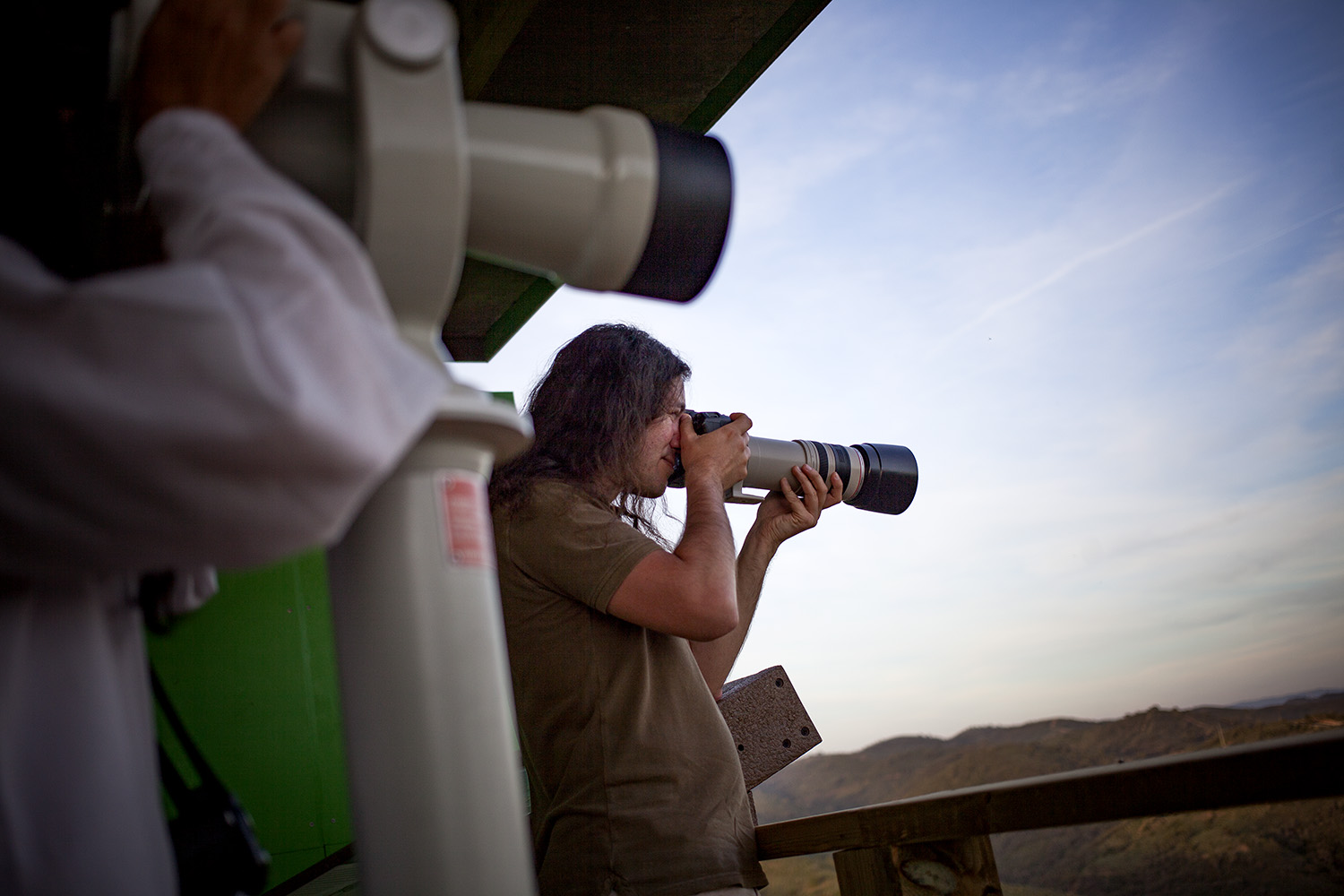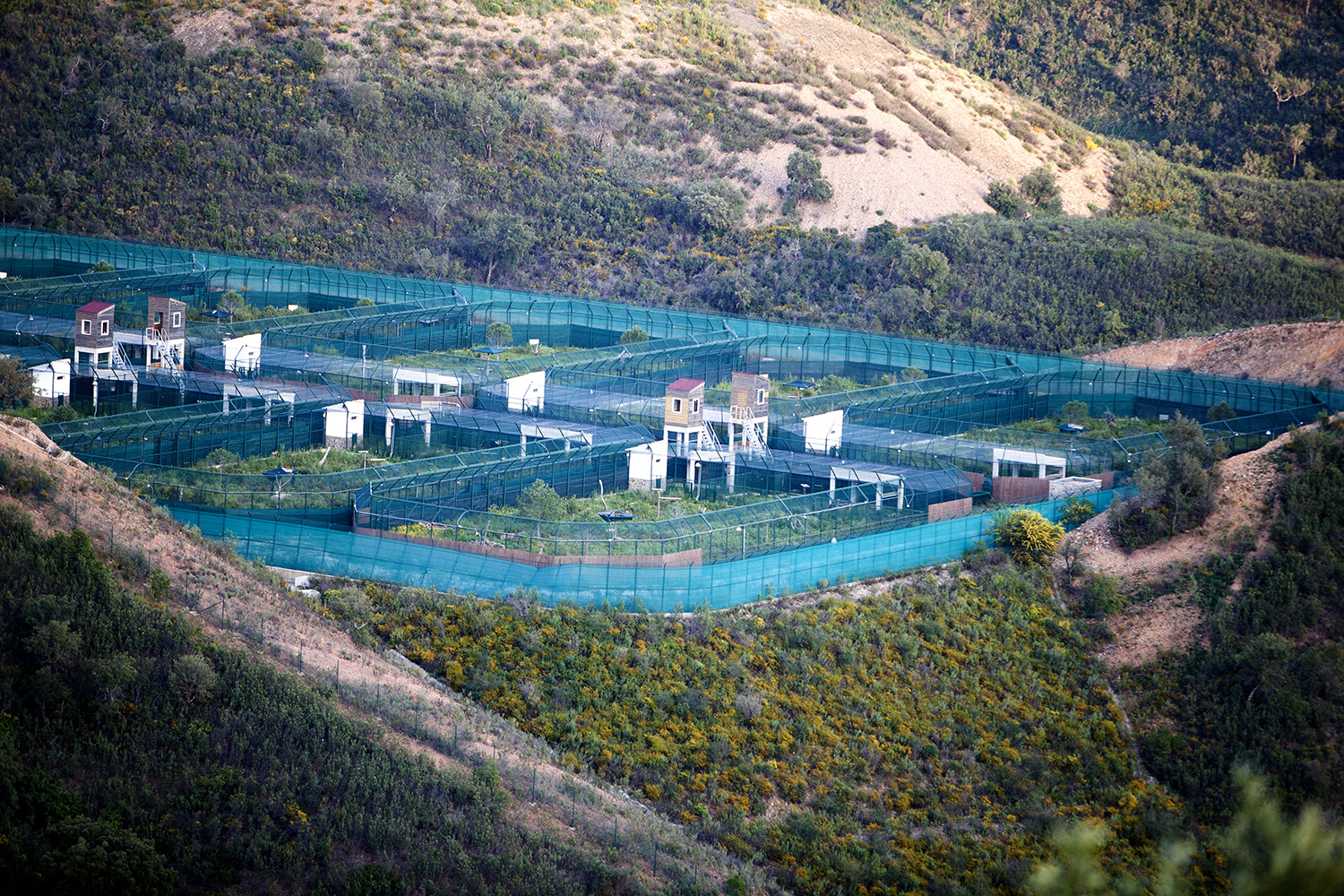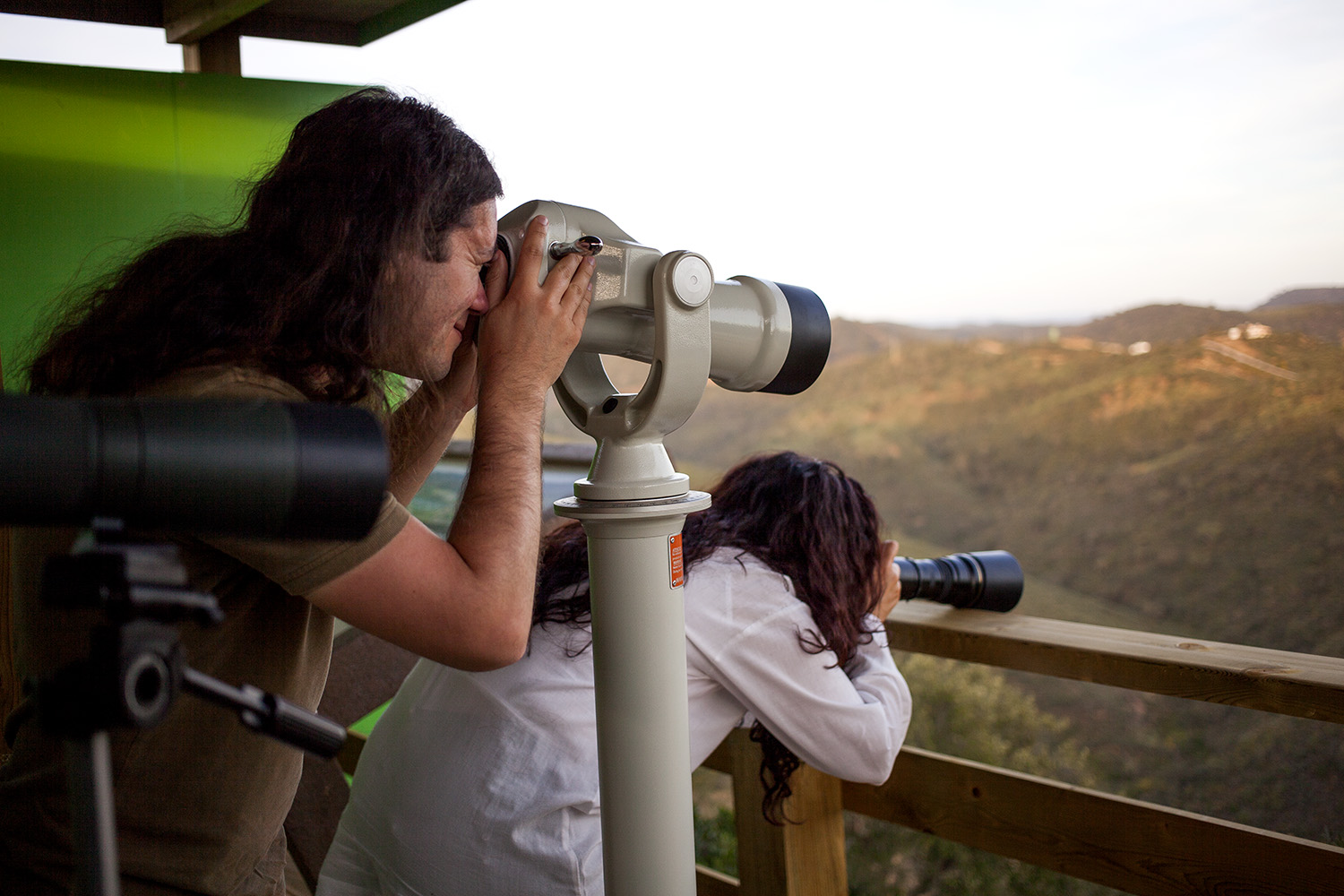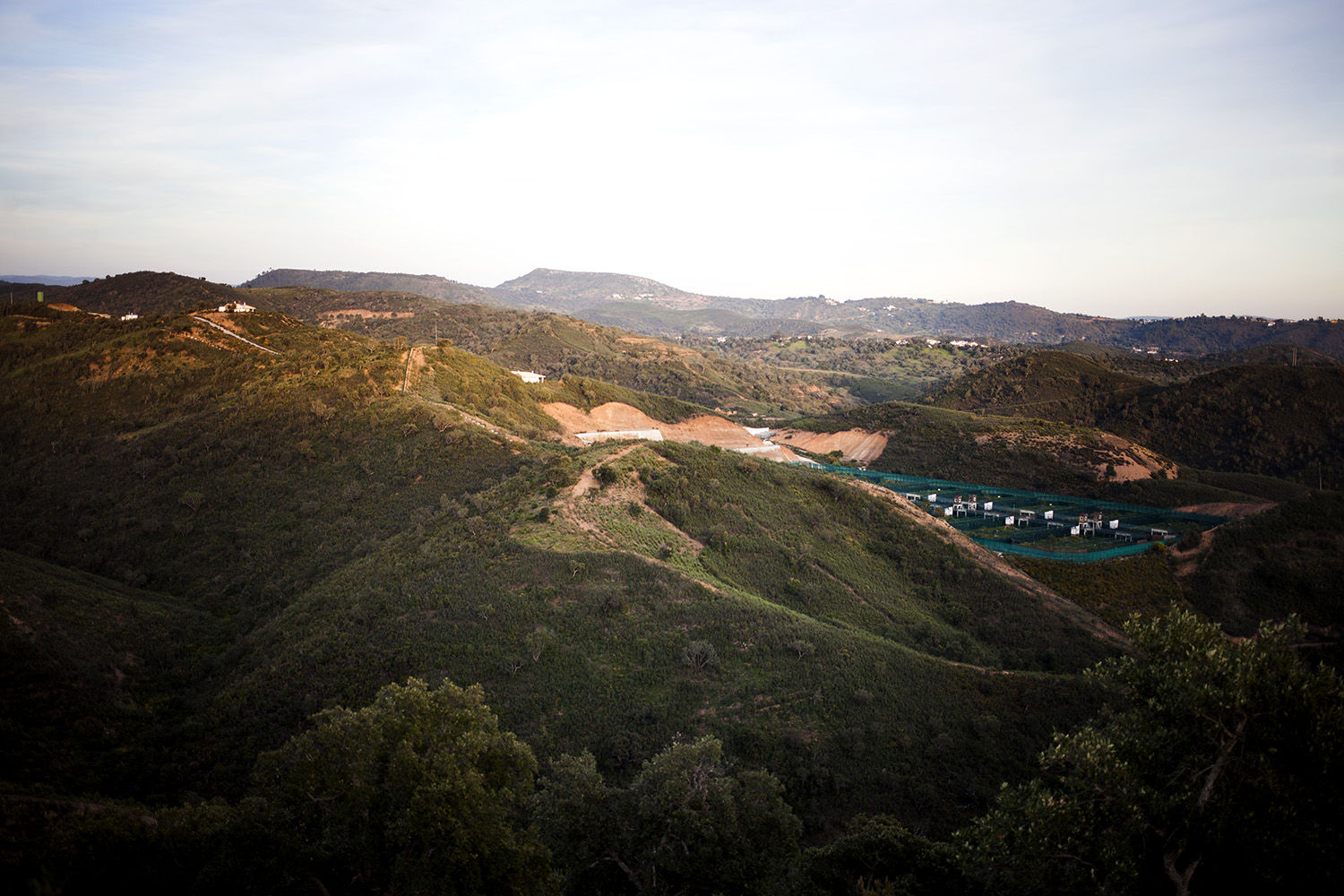Big gates guard the National Breeding Centre for the Iberian-Lynx (CNRLI), in Silves (Algarve, Portugal). No visitors are allowed to enter there, in order to avoid any kind of stress to these felines. Still, since December 2014, there is an observatory up in the hill nearby where you can take your time and watch the CNRLI’s lynx in their enclosures.
The observatory is only a few minutes away from the centre and a 20 minutes distance from São Bartolomeu de Messines village. One has to leave the winding road and take a dirt road. Then, there’s a short and clear path up the hill until you arrive at the observatory. Here there’s one telescope to help you watch the Iberian-lynx down the valley.
When we visited the observatory, as the sun was coming down, we saw three lynx. One was seated and the other two where wandering next to the fences of their enclosures.
When we arrived there we met Isabel Duarte and Nelson Viegas, from Loulé (Algarve). This Science and Maths teacher, 50, and this computer programmer, 40, were enjoying the view and the lynx. They brought their own telescope to watch the night sky and several photographic cameras.
“This is the first time we came here”, says Isabel. But before the observatory was built, they had already visited this same spot. “We have already been here to try to see the animals. But we didn´t take photos of them.” As Nelson told us, “I prefer not to take pictures if that might upset the animals”.
Isabel and Nelson are passionate about photography. “We love to photograph nature”, says Isabel. “Today we’ve already photographed a warbler, five species of orchids, butterflies, dragonflies and grasshoppers.” They do this simply because they love it. “We don’t aspire to be great photographers.”
The two of them are leaning against the observatory’s balcony and search for the lynx. “We know little about them, we only know what comes in the newspapers”, Nelson recognized. “But I know they are doing an excellent work at CNRLI. I hope it’s not in vain.”
CNRLI’s work is just a piece of this intricate conservationist puzzle. The recovery of the specie’s habitat and the reintroductions in the wild are also part of the Iberian project to bring back the Iberian-lynx from the brink of extinction. “I would like very much to watch the lynx being released in nature”, says Isabel. She and Nelson have already been at Mértola, the only region in Portugal where the lynx are being released, but they couldn’t see any. Maybe it’s just a matter of time.
[divider type=”thick”]The Birth of an Iberian-Lynx
A team from Wilder has been at CNRLI for two days on March 2015. In this series we show you how is it to work at this centre and all the people who take care of this endangered species.





